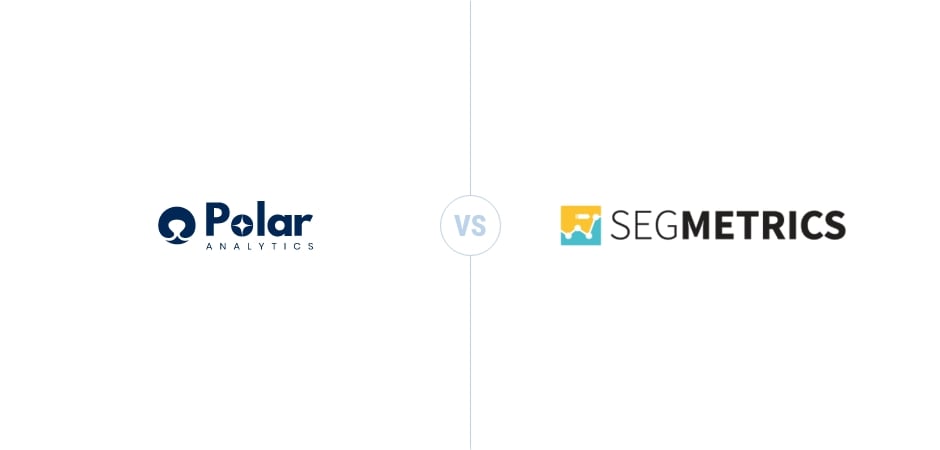With millions of shopping searches happening on Google each day, Shopping Ads are an excellent opportunity for businesses to connect with consumers at key decision-making points in their shopping journey. These ads not only display eye-catching product images, but also provide consumers with essential information such as prices, reviews, and availability, right within the search results page. As a result, Shopping Ads have become an essential part of any successful online advertising strategy.
To help you create effective and profitable campaigns that reach your audience and drive sales, let’s take a look at how Shopping Ads work, their benefits, and how to set up a campaign using today’s best practices. So, let’s dive in!
How do Shopping Ads work?
Shopping ads work differently from traditional Search Ads as they use the product data that you submit through Google’s Merchant Center to determine which ads to show to users. This means that instead of targeting keywords, Shopping ads rely on the information you provide about your products, such as their attributes, prices, and availability. Google’s algorithms then match this data with a user’s search query and show the most relevant products in the ad.
You can create Standard Shopping or Performance Max campaigns that allow you to organize and promote your product inventory within Google Ads, giving you greater control over how your products are advertised. With Standard Shopping campaigns, you can also create product groups based on specific attributes, such as brand or category, and set bids for each group. Performance Max campaigns, on the other hand, use your advertising goals and product feed data to optimize your ad performance across Google’s channels.
Where Shopping Ads can appear
Standard Shopping Ads are designed to appear in selected Google Ads channels such as the Shopping tab, Google Search Ads (separate from Search text ads), Google Images, Google Search Partner websites, and Maps via Local Inventory Ads. On the other hand, Performance Max campaigns give advertisers access to the same Google Ads channels as Standard Shopping Ads – but with the addition of the Google Search text ads, Google Display Network, YouTube, Gmail, Discovery.
Benefits of Google Shopping Ads
Google Shopping Ads provide a range of benefits over traditional product advertising. Let’s take a closer look what advantages they give over traditional forms of retail advertising:
- Better qualified leads: By featuring product information directly in ads, Shopping Ads help users make more informed purchase decisions. This leads to better-qualified leads who are more likely to complete a purchase. For example, users can quickly see the product image and price in the ad, which puts them further down the purchasing funnel compared to other types of ads.
- Easy retail-centric campaign management: Shopping Ads use the product attributes defined in the Merchant Center data feed, rather than keywords, to show relevant ads. This saves marketers a lot of time and effort as its algorithms automatically pull data from your store, craft ads for your products, and match them with relevant search queries. Although it may take more time to set up initially, it requires less ongoing effort afterward, making it a good starting point for any retailer.
- More visible: Compared to traditional text-based ads, Shopping Ads get a premium spot on search result pages. They also display product images, prices, and other key information directly in the search results. This makes it a lot easier for shoppers to quickly evaluate products and compare prices, which leads to a higher click-through rate and ultimately more sales for retailers. More than one ad can also appear for a single user search, potentially doubling the reach of a single search.
- Powerful reporting and competitive data: With detailed reporting tools, merchants can track the performance of their products and gain insights into the competitive landscape. Benchmarking data, impression share data, and the Bid Simulator tool can all help identify growth opportunities and optimize campaigns for better performance.
- Access to new inventory: Performance Max campaigns, which are a new goal-based campaign from Google, provide access to new inventory and automation insights across all Google channels and networks. This can help unlock new audiences and drive even better performance for merchants looking to promote their products.
Performance Max Campaigns
Performance Max is a goal-oriented campaign type that leverages inputs like your budget and product feed to optimize performance in real-time based on your conversion goals. It also complements keyword-based Search campaigns and allows advertisers to access their Google Ads inventory across all of Google’s advertising channels, including YouTube, Display, Search, Discover, Gmail, and Maps – all from a single campaign. With Performance Max, advertisers can achieve their specific conversion goals by optimizing their campaigns in real-time across multiple channels using Google’s Smart Bidding technology. Moreover, Performance Max empowers advertisers with a range of automation technologies, such as bidding, budget optimization, audiences, creatives, and attribution, to help them get the most out of their advertising campaigns.
Standard Shopping Ads vs Performance Max Campaigns
As a retailer, you have the option to utilize Performance Max campaigns with a Google Merchant Center feed or Standard Shopping campaigns. Standard Shopping campaigns allow retailers to advertise their products on Google’s Shopping tab and other search results pages, targeting customers who are actively searching for the products they sell.
Performance Max campaigns offer a significant advantage over standard Shopping Ads as they provide advertisers with a more comprehensive approach to reaching customers across multiple channels. Advertisers can automatically access new inventory and formats as they become available, without having to set up any new campaigns. This feature enables advertisers to stay ahead of the curve by tapping into new advertising opportunities without any additional effort.
Performance Max campaigns also use machine learning to automatically optimize targeting and bidding based on the advertiser’s goals, while Standard Shopping campaigns require manual bid adjustments and product group optimizations. Overall, while both campaign types aim to drive sales and traffic for retailers, Performance Max campaigns offer a more comprehensive and automated approach to advertising.
Benefits of Performance Max campaigns:
Performance Max campaigns provide numerous benefits that can help businesses to achieve their advertising goals, such as:
- Customized goals: Businesses can find more converting customers by customizing the goals that matter to their business and maximizing conversions or conversion value. Performance Max allows businesses to engage customers across Google’s channels, using audience signals to unlock new customer segments they may not have expected.
- Data-driven attribution: Performance Max can drive more value by using data-driven attribution across channels to optimize for the most incremental touchpoints that drive customers to conversion. Machine learning models are used to make more accurate predictions about which ads, audiences, and creative combinations perform best for businesses, resulting in better performance and more value for their advertising budget.
- Rich insights: Performance Max campaigns provide rich insights that can help businesses to understand which creatives are impacting performance and optimize campaign creatives to drive ROI. Performance Max asset reporting can help businesses to gain insights into the performance of their ad creatives. Additionally, new insights such as rising search trends can help businesses to understand changes in performance and inform their broader business strategy.
Note: Most Smart Shopping and Local campaigns have already been upgraded to Performance Max in 2022. Performance Max now offers all the essential features found in Smart Shopping and Local campaigns while also providing access to new inventory and ad formats – and automation insights. Accounts with upgraded campaigns can no longer create new Smart Shopping campaigns.
How to create a Shopping Ads campaign
Google has made it easy for advertisers to set up campaigns for their products, thanks to its user-friendly interface and step-by-step instructions. Creating a Shopping Ads campaign therefore takes only a few minutes and can be done by anyone – regardless of their technical expertise. Here’s how.
- Log in to your Google Ads account.
- Click on Campaigns in the page menu on the left.
- Click on the plus button and select New campaign.
- Choose an objective for your campaign. Based on your objective, you can either “Add goal” or use the account-default goal.
- Select Shopping as your campaign type. You can either create a Performance Max campaign or proceed with your Shopping campaign.
- Choose the Merchant Center account that contains the products you want to advertise. If you don’t view any accounts here, you’ll need to link your Merchant Center and Google Ads account first. Note that you can’t change the merchant after you’ve created the campaign. Learn how to Link Merchant Center and Google Ads.
- (Optional) Select feeds that contain the products you want to advertise in this campaign: Here you have two options: selecting feeds by feed label or selecting feeds by country of sale. If you choose to select feeds by feed label, the label you choose will determine which feeds from the selected Merchant Center account can be advertised in the campaign. On the other hand, if you choose to select feeds by country of sale, you need to select the country where your products will be sold and shipped to, and the ads will only be shown to people from that country.
- Choose your advertising preferences: Enter a campaign name and adjust additional settings, such as inventory filters, local products, campaign URL options, bidding type, daily budget, campaign priority, networks, devices, and locations. You can change most of these settings after the campaign has been created.
- Save your changes by clicking on the “Save and continue” button.
- Create your first ad group and give your ad group a name for easier identification. This can be changed later.
- Enter a bid for the ad group: This bid will apply to the first product group “All products” and can be modified after the campaign has been set up. The ad group will consist of individual product ads that will be automatically generated using information from your Merchant Center account.
- After filling in the necessary details, click on the “Save” button.
- Once you’ve saved your ad group, you’ll be directed to the product groups page where you’ll see the “All products” group which contains all the products in the campaign. You can create more product groups and use subdivisions to make bidding more specific.
Best practices for Shopping Ads
Here’s how you can optimize your Shopping ads campaigns to get more sales out of every click.
1. Make your products stand out
To make Shopping ads more visually appealing to customers, you should always try to use high-quality, product-first visuals with close-up product shots and white backgrounds. These visuals make it easier for customers to see product details and can lead to increased engagement. Additionally, it is crucial to ensure that product data is accurate and up-to-date, including rich product descriptions, product prices, and availability. Annotations can also be used to stand out to customers looking for convenient ways to purchase products.
Including a video asset that is at least ten seconds long can also help show the business in action. Businesses can also drive foot traffic to their store by setting store goals within Performance Max campaigns, promoting physical locations across Google, and maximizing in-store value by utilizing store visits, call clicks, and/or direction clicks.
Pro tip: Customer Match can help you reach out to existing customers and find new ones across various Google platforms. By using the information your existing customers have shared with you, it will target those customers as well as new ones like them. It also does this in a privacy-safe way, which is important given the shift away from cookie-based remarketing. Also, when using Smart Bidding and optimized targeting, Customer Match lists are automatically enabled to enhance the performance of your ad campaigns.
2. Optimize campaigns for maximum performance
Once your Shopping campaigns are up and running, it’s important to regularly assess its performance to ensure that you achieve your desired outcomes. You can keep track of your campaign’s performance by checking several key areas within Google Ads:
- The Product Groups page: The Product groups page is the first place to check the performance of your product groups. You can view information like max. CPC, impressions, CTR, conversion metrics, benchmark CTR and CPC, impression share, click share, and more. You can also download reports and add segments to view your performance by days of the week, click type, or device
- The Products page: Monitoring product insights in the Products page of Google Ads can help your understand individual product performance within their campaign and resolve potential issues that may impact reach. Insights can be used to spot underperforming offers, identify products with missing feed attributes, and compare bidding strategies to top competitors.
- The Predefined reports page: This page allows for customized performance reporting with any dimension you choose, including category, product type, and brand. You can also segment performance data at the campaign or ad group level to compare traffic from the Google Search Network and Google search partners.
- The Auction Insights report: This report evaluates how your Shopping ad campaigns are performing in comparison to other advertisers participating in the same auctions. These insights guide you in making strategic decisions regarding your bidding and budgeting choices.
- The Bid Simulator: If you’re unsure how adjusting your bids could impact your performance, the Bid Simulator can provide valuable insights. It estimates the potential advertising results over the past seven days if you had set different bids, helping you understand how different product group bids may affect your traffic and conversions.
Pro tip: The quality and accuracy of your ad’s performance are heavily reliant on the product data that you have uploaded in Merchant Center. It is therefore crucial to ensure that your product data is up-to-date and precise to ensure the best results for your ad campaigns.
3. Use recommendations
Recommendations are a feature in Google Ads that identifies opportunities to improve account performance based on real-time data. It is important to review recommendations regularly, prioritize those that align with your business goals and have the biggest impact on performance. You can also dismiss recommendations that do not align with your goals and provide a reason to help Google Ads improve your recommendations in the future.
Keep your Shopping Ads Protected
As a retailer using Google Shopping Ads, it’s important to understand what click fraud is and how it can affect your advertising campaigns. Click fraud occurs when an individual or a group of individuals intentionally click on your ads with no real interest in your products or services.
These clicks can come from competitors trying to exhaust your advertising budget, bots or automated programs simulating human clicks, or even from individuals or groups hired specifically to generate fake clicks on your ads. Click fraud can quickly deplete your advertising budget, reduce your ROI, and ultimately harm your business by wasting your time and resources on wasteful traffic.
ClickGUARD, a leading fraud detection and prevention software, can help you eliminate unwanted clicks on your PPC ads and save your ad budget for real, legitimate clicks. Our latest version comes with many new and exciting features, such as Facebook Ads support, fully automated capabilities, a new and more intuitive user experience, value-focused pricing adjustments and account auto-upgrading, improved multi-account support, and improved reporting tools. Start maximizing your ROI and protect your ad budget today with ClickGUARD!
FAQ
How do Shopping Ads work?
Shopping Ads rely on the product data submitted through Google’s Merchant Center to determine which ads to show to users, using the product attributes, prices, and availability to match a user’s search query. Retailers can create Standard Shopping or Performance Max campaigns to organize and promote their product inventory.
Where do Shopping Ads appear?
Standard Shopping Ads appear in selected Google Ads channels including the Shopping tab, Google Search Ads, Google Images, Google Search Partner websites, and Maps via Local Inventory Ads. Performance Max campaigns offer the additional reach of Google Search text ads, Google Display Network, YouTube, Gmail, and Discovery.
What are the benefits of using Shopping Ads?
Compared to traditional retail advertising, Google Shopping Ads provide better-qualified leads, easier retail-centric campaign management, and higher visibility with premium ad placement and product information displayed directly in search results.
What are Performance Max Campaigns?
Performance Max Campaigns are a new goal-oriented Shopping Ad campaign type that optimizes performance in real-time based on conversion goals using inputs like budget and product feed. It also provides a range of automation technologies and access their Google Ads inventory across all channels from a single campaign.
Why should advertisers keep their Shopping Ads protected?
Advertisers should keep their Shopping Ads protected from click fraud to prevent competitors, bots, or hired individuals from clicking on their ads with no real interest in their products or services. Using fraud detection and prevention software like ClickGUARD can help eliminate unwanted clicks and save ad budgets for real, legitimate clicks.



